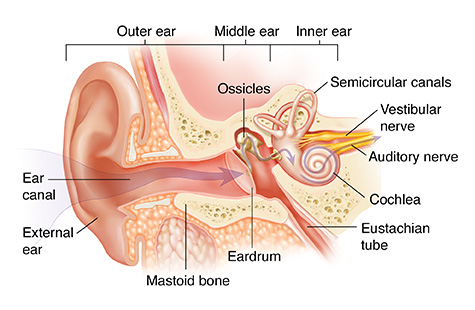Hearing and Speech Concerns
If you suspect your child with autism has a hearing problem, even though they might be able to pass a hearing test, you more than likely are right. Loss or lesser functioning of the inner ear can cause a reduced ability to discriminate between two sounds or also impaired auditory tuning. What this means is a child technically can hear, but with the inner ear loss of function, what happens is, the child can’t discriminate between two sounds; two vowels, they sound the same.
Learn From The Past
Let’s learn from the past. So many times there’s information that we learn, but we don’t pass it on to others. So here’s something that Temple Grandin herself learned, and I want to share it with you so that you can learn from her.
“I had problems getting my words out. If people spoke directly to me, I understood what they said. But when the grownups got to yakking really fast by themselves, it just sounded like ‘oi oi.’ I thought grownups had a separate language. I’ve now figured out I was not hearing the hard consonant sounds.”
– Temple Grandin
Hearing and Autism
- Some of the earliest signs of autism involve auditory processing.
- Recent research showed that certain hearing thresholds in children with autism were significantly related to receptive and expressive language measures.
- That research showed reduced inner ear hearing around 1kHz in those with autism may also impair speech perception and comprehension in challenging environments.
- Caution: Hearing loss is not causative for autism.
The Ear – Inner, Middle & Outer
A quick overview of the Ear: There’s the inner, middle and outer ear -information has to be passed effortlessly from the outer to the middle to the inner ear and then also to the brain. So a lot of nerves get involved.

Typical Hearing Test
Let’s talk about a typical hearing test. A Pure Tone hearing test is what many of us experienced as children. This Pure Tone hearing test, it measures the softest or least audible sound that a person can hear. Basically, you put on the headphones, you listen for a beep and you raise your hand when you heard the beep. This is the classic hearing test. With this test, however, the person must be able to communicate. So you must be able to raise your hand when you hear a sound. Not so easy for many of our children with autism.
Thankfully, a Pure Tone test can be done in two other ways.
- Conditioned Play Audiometry – Your child will do something each time they hear a sound. Such as put a block in a box, put pegs in a hole, or put a ring on a cone.
- Visual Reinforcement Audiometry – When your child looks in the direction of the sound, they see a moving toy or flashing light where the sound was. This rewards/encourages your child to look towards the sound when they hear it.
The Middle Ear
Middle ear problems make getting the sound from the outer and getting it to the inner ear and brain difficult. There are 3 tests for determining middle ear function and all of them do NOT require the person to communicate:
- Tympanometry – A probe that looks like an earphone is put into the ear and air is moved thus eardrum movement is measured. This test can also detect ear infections based on the eardrum movement.
- Acoustic reflex measures – A muscle in the middle ear tightens when hearing a loud sound. This is a reflex and we can’t stop the muscle contraction. They can measure how loud the sound has to be before this reflex occurs. This can help determine hearing loss. The probe looks like an earphone.
- Static acoustic measures – Measures the physical volume of the air in the ear canal. This can detect a perforated eardrum and check the openness of tubes in the ears.
Inner Ear Test
This is a really interesting test. In the inner ear, there are these tiny hairs that change in length, depending on the sound waves. It’s absolutely fascinating.
- Otoacoustic emissions – In the inner ear there are tiny hairs that change in length depending on sound waves. The change in length produces it’s own sound that can be measured.
- Hearing loss in those with autism in the inner ear can result in a child not being able to discriminate between different sounds. A typical (pure tone) hearing test can not distinguish this.
- How the test is performed: A small earphone is placed in the ear and measures the sounds that come back.
Inner Ear & Brain Test
Now, let’s go into the inner ear and the brain test. This test is looking at the brainstem response and is a little bit more complicated as the child has to lay still or be asleep.
- Auditory brainstem response: The test measures how well each ear can pick up sounds. It also tells how well the hearing nerve sends the information to the brain.
- How the test is performed: electrodes are put on the head and skin. They record brain wave activity in response to sounds heard through earphones. The child must be still or asleep but no communication is needed from them to do the test.
Some hospitals allow you to batch these tests together. So if your child’s going in for, let’s say, some type of maybe MRI or some dental work, you can also bundle in these hearing tests. So if you do have to sedate your child, think about all the different things that can be done, then work with a large hospital system to batch those appointments together. You don’t want to necessarily be giving your child sedation medication for three or four or five different appointments. Batch it all together.



